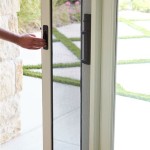Sunrise Patio Door Installation Instructions
Installing a Sunrise patio door can significantly enhance the aesthetic appeal and functionality of a home. The following instructions provide a step-by-step guide for installing a Sunrise patio door, emphasizing precision and adherence to safety protocols. This guide assumes a basic level of carpentry knowledge and familiarity with power tools. Always consult local building codes and regulations before commencing any construction project.
Before beginning the installation process, it is crucial to verify the dimensions of the new patio door against the rough opening. This confirmation ensures a proper fit and avoids potential complications during installation. The rough opening should be slightly larger than the overall frame dimensions of the patio door. A general guideline is to allow approximately ½ to ¾ of an inch on each side and the top for shimming and insulation. Incorrect measurements can lead to structural issues and compromised weather resistance.
Gather all necessary tools and materials before starting the project. Essential tools include a level, measuring tape, hammer, drill with various bits, safety glasses, work gloves, shims, sealant, exterior-grade screws, pry bar, utility knife, and a caulking gun. Materials needed include the Sunrise patio door unit, shims, insulation (fiberglass or foam), exterior caulk, and appropriate fasteners. Having all materials readily available streamlines the installation process and minimizes delays.
Safety is paramount throughout the entire installation procedure. Always wear safety glasses and work gloves to protect eyes and hands. Working at heights requires appropriate ladder safety measures. Disconnect electrical circuits that might be located near the work area to prevent electrical shock. If the existing door is heavy, enlist the assistance of another person to avoid back strain or injuries.
Preparing the Opening
The first step in the installation process involves removing the existing door and preparing the rough opening. This involves careful demolition and thorough cleaning to ensure a smooth and level surface for the new door.
Begin by removing the interior trim around the existing door frame using a pry bar and hammer. Exercise caution to avoid damaging the surrounding drywall or plaster. Score along the edges of the trim with a utility knife to prevent paint from peeling excessively. Gently pry the trim away from the wall, working slowly and methodically.
Next, remove the exterior trim or siding around the door frame. This step may require different tools depending on the type of siding. For wood siding, use a pry bar to carefully detach the boards. For vinyl siding, use a specialized siding removal tool. Again, score along the edges of any painted surfaces to prevent paint damage.
Once the trim is removed, detach the existing door frame from the rough opening. Use a utility knife to cut any caulk or sealant that is holding the frame in place. Use a reciprocating saw or a pry bar to separate the frame from the wall studs. Be prepared for the weight of the old door, especially if it is a large or heavy unit. Having an assistant is highly recommended.
After removing the old door and frame, thoroughly clean the rough opening. Remove any nails, screws, or debris that may be present. Inspect the surrounding studs and header for signs of rot or damage. Replace any damaged wood before proceeding with the installation. Ensure the sill is level and the jambs are plumb. If necessary, use shims to correct any imperfections.
Installing the Sunrise Patio Door
The installation of the Sunrise patio door requires careful placement and alignment. Precise shimming and fastening are crucial for ensuring proper operation and weather resistance.
Carefully lift the new patio door into the rough opening. Center the door within the opening, ensuring that the frame is flush with the exterior wall. Use shims as needed to adjust the door's position and ensure it is both plumb and level. Place shims behind the hinge jamb, strike jamb, and head jamb to provide support and prevent warping.
Use a level to check the plumb of the side jambs. Adjust the shims until the jambs are perfectly vertical. Then, check the level of the head jamb and sill. The sill should be level to ensure proper water drainage. Make sure that there is uniform spacing between the door panel and the frame.
Once the door is properly aligned, secure it to the rough opening using exterior-grade screws. Drill pilot holes through the frame and into the surrounding studs. The screw length should be sufficient to penetrate the studs by at least 2 inches. Space the screws evenly along the jambs and head jamb.
After securing the door, test the operation of the sliding panel. Ensure it slides smoothly and locks securely. Adjust the rollers or hinges as needed to achieve optimal performance. Check for any gaps or leaks around the door frame. If any are present, add more shims and re-tighten the screws.
Insulating and Finishing the Installation
The final steps involve insulating around the door frame and applying sealant to create a weather-tight seal. These steps are essential for preventing drafts and water damage.
Fill the gap between the door frame and the rough opening with insulation. Fiberglass or foam insulation can be used for this purpose. Pack the insulation tightly to prevent air infiltration. Be careful not to overfill the gap, as this can distort the door frame.
Apply a bead of exterior-grade caulk around the perimeter of the door frame where it meets the exterior wall. This will seal the gap and prevent water from entering. Choose a caulk that is paintable and compatible with the siding material. Ensure the caulk is applied evenly and smoothly for a professional finish. Smooth the caulk bead with a wet finger or a caulking tool.
Install the interior trim around the door frame. Use a miter saw to cut the trim to the correct length and angle. Attach the trim to the wall using finishing nails or screws. Countersink the nails or screws and fill the holes with wood filler. Sand the filler smooth and paint or stain the trim to match the existing decor.
Inspect the door for any remaining gaps or imperfections. Touch up any painted surfaces and clean the glass. Ensure the door is operating smoothly and locking securely. Provide the homeowner with instructions on how to maintain the door to prolong its lifespan. Regularly check the weatherstripping and lubricate the rollers as needed.
Dispose of all construction debris properly. Sweep the work area and remove any remaining materials. A clean and organized work site is essential for safety and professionalism.
Sunrise patio doors offer a blend of aesthetic appeal and energy efficiency. Proper installation is vital to realizing their full benefits. Following these steps meticulously ensures a successful and durable installation, keeping homes comfortable and secure.

Sunrise Series V4500 Sliding Glass Doors Mi Windows And

Sunrise Series V4500 Sliding Glass Doors Mi Windows And

Sunrise Series V4500 Sliding Glass Doors Mi Windows And

Restorations Series V5500 Mi Windows And Doors

Sunrise Series V4500 Sliding Glass Doors Mi Windows And

Sunrise Series V4500 Sliding Glass Doors Mi Windows And

Multi Slide Patio Door Installation

Reviews For Clopay Classic Steel Long Panel 16 Ft X 7 Insulated 12 9 R Value White Garage Door With Windows Pg 1 The Home Depot

Cost To Install A Sliding Glass Door Styles And Materials Modernize

How To Install A Sliding Screen Door In 5 Minutes Howto
Related Posts








